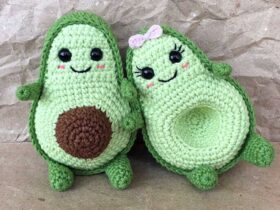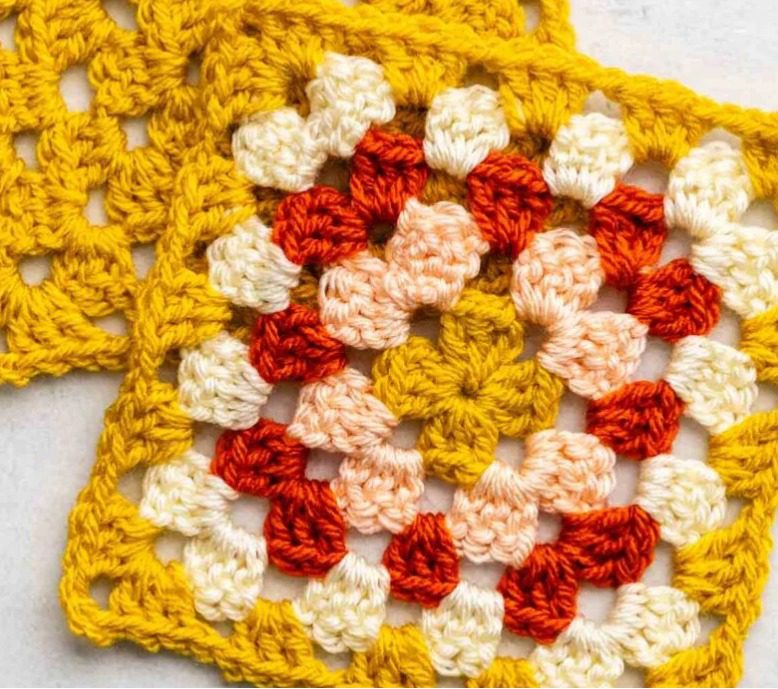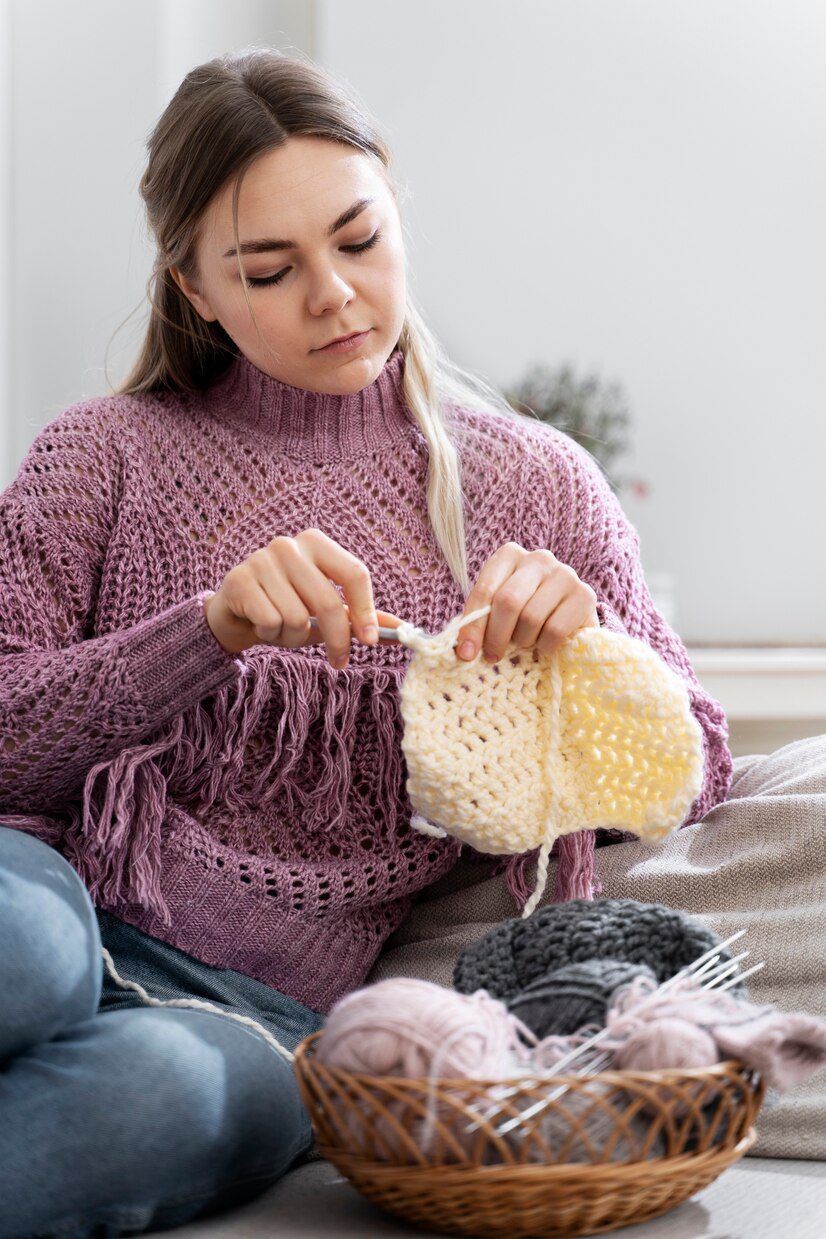The granny square is one of the most iconic and versatile crochet patterns ever created. These colorful, modular squares have adorned everything from vintage afghans to modern fashion pieces, and their enduring popularity stems from their simple construction and endless creative possibilities. If you’re new to crochet or looking to expand your skills, learning how to make an easy crochet granny square is the perfect starting point for countless beautiful projects.
Why Granny Squares Are Perfect for Beginners
Granny squares have remained popular for generations, and for good reason. They’re approachable for beginners yet versatile enough to keep experienced crocheters engaged. Here’s why granny squares deserve a spot in every crocheter’s repertoire:
- They use just a few basic stitches that are easy to master
- You can complete a square in a single sitting for instant gratification
- They’re perfect for using up small amounts of leftover yarn
- Once made, they can be combined into countless projects from blankets to garments
- Their modular nature means you can work on small, portable pieces rather than lugging around a large project
The classic granny square design consists of groups of double crochet stitches separated by chain spaces, creating a distinctive lacy appearance. Though there are countless variations, mastering the basic pattern will give you a solid foundation for exploring more complex designs later.
Materials Needed for Easy Crochet Granny Squares
Before you begin crocheting your granny square, gather these supplies:
Yarn
- For beginners: Medium-weight (worsted/category 4) yarn in your choice of colors
- Suggested options: Acrylic yarns like Lion Brand Basic Stitch, Red Heart Super Saver, or Caron Simply Soft
- Amount: Small amounts of yarn are sufficient for individual squares—perfect for using scraps
Hook
- Size H/5.0mm hook for worsted weight yarn
- Adjust hook size up or down depending on your yarn weight and tension
Notions
- Scissors for cutting yarn
- Tapestry needle for weaving in ends
Essential Techniques for Granny Squares
Before diving into the pattern, familiarize yourself with these basic techniques if you’re new to crochet:
Starting Methods
You have three options for starting your granny square:
- Magic ring (recommended): Creates a tightly closed center with no hole
- Chain ring: A quick method using a ring of chain stitches, though it leaves a more noticeable center hole
- Starting in a single chain: Simple but can be challenging to fit all stitches into one chain
Basic Stitches
These fundamental stitches form the building blocks of the classic granny square:
- Chain stitch (ch): Creates the foundation and spaces between stitch clusters
- Double crochet (dc): The main stitch used in traditional granny squares
- Slip stitch (sl st): Used to join rounds
- Granny cluster: A group of three double crochet stitches worked into a chain space
Step-by-Step Basic Granny Square Pattern
This pattern will create a classic granny square. I’ll walk you through each round in detail, perfect for beginners who appreciate thorough instructions.
Round 1: Creating the Center
- Start with a magic ring. (If you’re unfamiliar with this technique, it involves creating an adjustable loop with your yarn that can be tightened after working stitches into it.)
- Chain 3 (counts as your first double crochet).
- Work 2 more double crochet stitches into the magic ring. This forms your first “granny cluster” of 3 double crochets.
- Chain 3 (this creates your first corner).
- Work another cluster of 3 double crochets into the magic ring.
- Chain 3 again for the second corner.
- Repeat steps 5-6 two more times, so you have a total of 4 clusters and 4 chain-3 spaces.
- Join the round by making a slip stitch into the top of the beginning chain-3.
- Pull the magic ring tight to close the center.
At this point, you should have a small square shape with four clusters of 3 double crochets separated by chain-3 spaces at the corners.
Round 2: Building the Square
- Turn your work over so you’re looking at the “wrong side.” (Turning after each round helps maintain a square shape rather than having it twist.)
- Chain 3 (counts as your first double crochet).
- Work 2 more double crochets in the first corner chain-3 space. This is your first cluster in round 2.
- In the same corner space, chain 3, then work another cluster of 3 double crochets. This creates your first complete corner.
- Chain 1 (this creates the space between corners that you’ll work into in later rounds).
- In the next corner space, work a cluster of 3 double crochets, chain 3, and another cluster of 3 double crochets. Chain 1.
- Repeat step 6 for the remaining two corner spaces.
- Slip stitch to the top of the beginning chain-3 to complete the round.
After round 2, your square will have distinctive corners with two clusters in each corner separated by a chain-3 space.
Round 3: Adding More Texture
- Turn your work over again so the “right side” is facing you.
- Chain 3 (counts as your first double crochet).
- Work 2 more double crochets in the first chain-1 space from the previous round.
- Chain 1.
- For the corner: Work a cluster of 3 double crochets into the corner chain-3 space, chain 3, work another cluster of 3 double crochets in the same space. Chain 1.
- Work a cluster of 3 double crochets in the next chain-1 space. Chain 1.
- Repeat steps 5-6 for the remaining sides and corners of the square.
- Join with a slip stitch to the top of the beginning chain-3.
Round 4: Continuing the Pattern
- Turn your work over so the “wrong side” is facing you.
- Chain 3, work 2 more double crochets in the first chain-1 space. Chain 1.
- Work a cluster of 3 double crochets in the next chain-1 space. Chain 1.
- For the corner: Work a cluster of 3 double crochets into the corner chain-3 space, chain 3, work another cluster of 3 double crochets in the same space. Chain 1.
- Work a cluster of 3 double crochets in each chain-1 space along the side, with a chain-1 between each cluster.
- Repeat steps 4-5 for the remaining sides and corners of the square.
- Join with a slip stitch to the top of the beginning chain-3.
Round 5: Completing the Square
- Turn your work over so the “right side” is facing you.
- Chain 3, work 2 more double crochets in the first chain-1 space. Chain 1.
- Work a cluster of 3 double crochets in each chain-1 space along the side, with a chain-1 between each cluster.
- For the corner: Work a cluster of 3 double crochets into the corner chain-3 space, chain 3, work another cluster of 3 double crochets in the same space. Chain 1.
- Repeat steps 3-4 for the remaining sides and corners of the square.
- Join with a slip stitch to the top of the beginning chain-3.
- Fasten off and weave in ends.
You now have a completed classic granny square! You can continue adding more rounds following the established pattern to make a larger square.
Creating Multi-Colored Granny Squares
One of the most appealing aspects of granny squares is the opportunity to play with color. Here’s how to create a multi-colored square:
Option 1: Changing Colors Every Round
- Complete Round 1 with your first color.
- Cut yarn, leaving a 6-inch tail, and fasten off.
- Join your new color in any corner chain-3 space by pulling up a loop.
- Continue with Round 2 using the new color.
- Repeat this process for each subsequent round, changing colors as desired.
Option 2: Strategic Color Placement
For more intricate color patterns, you can change colors within a round:
- Work until the point where you want to change colors.
- Complete the last stitch before the color change, but stop before the final yarn over and pull through.
- Yarn over with the new color and pull through to complete the stitch.
- Continue working with the new color.
Common Granny Square Troubleshooting
Even experienced crocheters occasionally run into issues when making granny squares. Here are solutions to the most common problems:
Twisted or Skewed Square
Problem: Your square is starting to twist or spiral rather than lay flat. Solution: Be sure to turn your work after each round. This alternates the direction of your stitches and prevents the spiral effect.
Inconsistent Size
Problem: Your squares aren’t the same size despite using the same pattern. Solution: Check your tension and make sure you’re using the same hook size. Blocking your finished squares can also help even out minor differences.
Visible Holes Where Rounds Meet
Problem: You can see gaps where you’ve joined rounds. Solution: Make sure you’re joining with a slip stitch to the top of the beginning chain-3, not into a space. Also, ensure your initial chain-3 counts as a double crochet.
Rounded Corners
Problem: Your corners aren’t sharp and distinct. Solution: Make sure you’re creating proper corners with a cluster, chain-3, cluster sequence. The chain-3 space is essential for creating sharp corners.
Creative Variations on the Classic Granny Square
Once you’ve mastered the basic granny square, try these popular variations:
Solid Granny Square
This variation eliminates the holes for a more solid fabric, perfect for practical items like potholders or baby blankets. Instead of working clusters into chain spaces, you’ll work directly into stitches.
Sunburst Granny Square
A sunburst square features a beautiful floral design in the center, created with puff stitches or front post stitches, before transitioning to the traditional granny pattern for the outer rounds.
Textured Granny Square
Add visual interest by incorporating textured stitches like popcorns, puffs, or bobbles into your granny squares for a three-dimensional effect.
Giant Granny Square
Rather than making multiple squares and joining them, you can continue adding rounds to a single square to create an entire blanket in the granny pattern.
Projects to Make with Granny Squares
The possibilities for using granny squares are virtually endless. Here are some popular projects to inspire you:
Blankets and Afghans
The most traditional use for granny squares is to create cozy blankets. Join multiple squares in a grid pattern, or create a giant continuous granny square.
Clothing and Accessories
- Cardigans and Sweaters: Join squares to create trendy garments
- Bags and Totes: Sew squares together and add handles
- Scarves and Shawls: Arrange squares in a strip or triangle
- Fingerless Gloves: Small squares can become wrist warmers
Home Décor
- Pillows: Join squares and add backing for decorative cushions
- Coasters: Single squares make perfect drink coasters
- Table Runners: Arrange squares in a long rectangle
- Wall Hangings: Mount and frame special squares as art
Joining Granny Squares
Once you’ve created multiple squares, you’ll need to join them together. Here are the most popular methods:
Whip Stitch Join
The simplest joining method, where you sew squares together using a tapestry needle and yarn. Place squares right sides together or edge-to-edge and stitch through both layers.
Slip Stitch Join
A decorative join worked with a crochet hook. Place squares right sides up, edge-to-edge, and slip stitch through both layers.
Single Crochet Join
Creates a raised seam that adds texture to your project. Work single crochet stitches through both squares to create a strong join.
Flat Braid Join
A more decorative option that creates a flat braid between squares, adding visual interest to your project.
Blocking Your Granny Squares
Blocking is the process of wetting or steaming your finished crochet work and shaping it to the correct dimensions as it dries. This step is especially helpful for granny squares:
- Soak your squares in lukewarm water with a mild detergent designed for handwashing.
- Gently press out excess water (don’t wring or twist).
- Lay squares on a blocking board or padded surface.
- Pin the corners and edges to create a perfect square shape.
- Allow to dry completely before removing pins.
Blocking helps even out stitches, makes joining easier, and gives your finished project a more professional appearance.
Tips for Granny Square Success
- Count your stitches: Ensure you have the correct number of clusters and chains in each round
- Use stitch markers: Mark the beginning of rounds to avoid confusion
- Weave in ends as you go: This makes the finishing process much easier
- Keep a consistent tension: This helps your squares remain the same size
- Store work-in-progress squares flat: This prevents them from becoming misshapen
Conclusion
The easy crochet granny square is more than just a beginner-friendly pattern—it’s a versatile building block for countless creative projects. From colorful blankets to trendy garments, these simple squares offer endless possibilities for self-expression through crochet.
By mastering the basic granny square pattern outlined in this guide, you’ve added a classic technique to your crochet repertoire that will serve you well for years to come. Whether you make a single square as a coaster or hundreds for a family heirloom blanket, the humble granny square remains one of the most satisfying and adaptable patterns in the crochet world.
Start with a single square today, and you might find yourself with a beautiful blanket, stylish garment, or cherished gift before you know it. Happy crocheting!












Leave a Reply